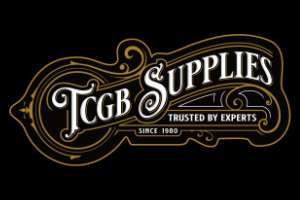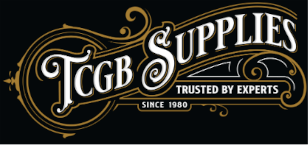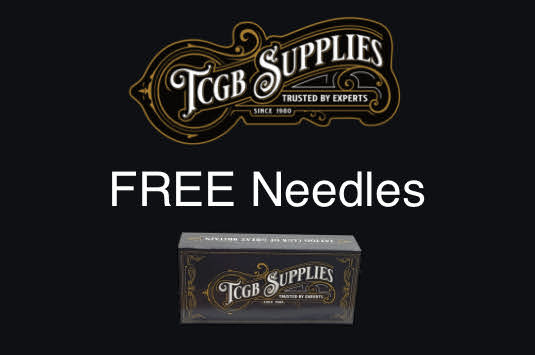About Us
Lionel Titchener started tattooing in 1973. He is a tattoo artist and a tattoo historian who enjoys learning about tattoo history in his free time. When he's not doing that, he makes custom tattoo machines for collectors. His interest in tattoos goes beyond just creating them, but how did it all begin? Lionel's journey into tattoos and machine-making started with his interest in anything mechanical. After having his first tattoo, he was fascinated by the tattoo machine and wanted to know how it worked.
After finishing school, Lionel got a job as an apprentice mechanic at a Volkswagen dealership. When the apprenticeship ended, he started working on commercial vehicles. He didn’t have all the experience working on diesel engines, but he got through the interview with what he'd learned at motor vehicle college.
His father has two small tattoos, and this got Lionel thinking that one day he wanted tattoos as well. It was the apprentice Lionel was now working with at his new job that led Lionel to get his first tattoo. Some had come into work on a Monday morning sporting new tattoos done over the weekend. So Lionel got his first tattoo done in Oxford at the beginning of the 70s.
Two years later, after getting an addition to his tattoo collection from the needle of Bob Smith in Oxford. Fate took a hand when Lionel walked into an old curiosity shop in London Road, Headington, Oxford.
This old shop with a large pair of buffalo horns over the door, full of military memorabilia, unbeknown to Lionel, belonged to ex-tattooist Tony Malo. Who used to tattoo in Oxford in 1962, and noticing the tissue and tape wrapped around Lionel's arm, he knew that he had just had a tattoo done and asked about it.
They started to talk about the art, Malo expressing surprise that someone was tattooing in Oxford because it was the lack of business that made him give up the needles in 1963. He went on to tell Lionel that he still had his tattooing equipment at home and wanted to sell it, and asked Lionel to tell his tattooist the next time he saw him.
Lionel thought about what it would be like to be on the other side of the needle. Lionel asked how much Malo wanted for his gear, and a price was agreed at 25 pounds - so he put down a £5 deposit with the balance to be paid the following week.
Now £25 was a lot of money in 1972. Lionel, by this time, was a fully qualified mechanic earning 35 pounds a week. The following payday could not come quickly enough, payday came, and Lionel went back to the shop to pick up his new goods only to be told that extra items had been found and the price had increased to 30 pounds. He only had 25 pounds on him, so he had to go back home and ask his brother to lend him the £5 he needed.
His brother lent him the money, and Lionel became the proud owner of two tattoo machines, some colour, needles, design sheets and other bits and bobs. Like so many tattoo artists, he used his skin to work on until he was confident to work on others.
The extras to the kit included a flyer from Spaulding & Rogers. This flyer had endorsements from Terry Wrigley of Glasgow and Les Skuse of Bristol. Lionel later made contact with Terry Wrigley, which led to a long friendship.
After a while, Lionel became confident enough to start to do tattoos on his friends. Many of these were apprentices from where he was working. This led to them bringing their friends to Lionel, and soon the word went around that there was a new tattooist in town. He soon began to see some work done by another tattooist who used to work in Oxford in the 1960s, this was "Matt", a Scottish painter and decorator who also did some tattooing.
Lionel started to ask around and try to track down the address for Matt. He tried knocking on a few doors in the district of Oxford known as Wellington Square. As when still at school, Lionel had heard that there used to be a tattooist in the centre of town in this area. Eventually, Lionel tracked Matt down to Marsh Road and went to the local pub, the Marsh Harrier, to see if anyone knew where Matt lived.
Matt sold Lionel some designs, and more importantly, he sold him the names and addresses of tattoo suppliers. That was the key that opened the door (somehow, if you paid for information, it would show the tattoo world that you were serious about the art).
Lionel would often pay a tenner (£10) just for a name on a piece of paper, and that's how it was in those days. You paid for everything, much the same as a magician pays for tricks nowadays.
The first tattoo that Lionel did was a small cross on his left arm. Two tattoos followed this on his legs. He concluded that he was not happy with the machines he had just bought and made a couple of new ones during his dinner break. Also, luckily for Lionel was the fact that the fitter that Lionel had been teamed up with at work was able to get the parts chrome plated as his father worked at a local company with a chrome plating plant.
This task didn't come hard to him because apart from being a mechanic, his great passion was engineering, which it still is today, and it's this that gets Lionel away from everything, engineering being his hobby. Also, Lionel has the plans and drawings for a rotary four-stroke petrol engine designed by him whilst he was an apprentice, but that's another story!
Lionel's first customers were his workmates, who had to take their shoes off at the bottom of the stairs under the watchful eyes of his mum, this being a condition of him being able to use his bedroom to tattoo. The room consisted of a wall covered in designs, a table with his gear on, one chair and a bed. Lionel used his room for about two years.
In early 1974, he was on holiday from work when he saw an ad in his local newspaper for a room to let above hairdressers near the city centre. He thought this would be ideal for a tattoo studio. But first, he had to win over the lady owner, who was none too happy about renting the room to a tattooist. She told him that she had already turned down someone else who wanted to use it for tattooing. Lionel did not give up easily and eventually persuaded her to let him have it for two weeks, and if she were unhappy after that time, he would move his gear out.
The two weeks turned into eighteen months of non-stop tattooing. The only trouble was that the hairdressers closed early on Saturdays, but Lionel's clients had to go through the shop to get to the stairs that led up to his studio. Silly things would go missing, like the odd bottle of shampoo. The lady who owned the shop was very understanding and packed everything away that was on the shelves each Saturday afternoon. Lionel also decided that on a Saturday, he would have to let his customers in two at a time and lock the rest out.
This was a situation he didn't like, and it was not fair to the landlady. When the chance of a shop on the next corner became available, he took his skills from number 70 to new premises at 66 St Clements Street. Lionel was now using a large double-fronted ground floor shop with its front door, and things ran along perfectly until the landlord decided to turn the shop into two separate units and sell them off. Because business was good, he bought one of the units and the small flat above and stayed there until 1983.
Then lack of space made it necessary to move to his present location at 389 Cowley Road. This was to become the headquarters of the newly formed Tattoo Club of Great Britain, and home of Britain's first Tattoo Museum, the oldest tattoo shop in Oxford.
One of the main things that disappointed Lionel was that so much of Britain's tattoo history was leaving our shores. Many items of interest were going to San Francisco, where the home of the world's premier tattoo museum is situated. It was Lyle Tuttle, the owner of the San Francisco museum, who was instrumental in setting up Britain's Tattoo Museum because it was Tuttle's book 'Tattoo 70' that Lionel read. It got him thinking England needed a home to keep its tattoo history.
With this new shop, Lionel now had the space. Lionel still had the old machines that he had bought from Tony Malo. He phoned other tattoo artists and explained what he was doing and was delighted to find others who felt the same. Memorabilia soon came flooding in, and not just from the UK but from all over the world. Today the museum has everything you ever needed to know about the history of tattooing. Lionel decided to call it the Tattoo History Museum. Lyle Tuttle suggested changing the name to the British Tattoo History Museum to avoid confusion with his Tattoo Art Museum.
Over the years, many people have visited Lionel's museum and tattoo shop in Oxford, including Students, Press and Television. The actor Robert de Niro made a visit to do research into the art. If you would like to visit, please phone first.
Lionel has organised a series of very successful tattoo conventions. The first two were held in Oxford in the late 1970's they ran each year until the mid-1980s. Because he is now occupied with other duties like running a busy shop and his tattoo supply business, he decided he no longer had time to organise any more conventions. He does the occasional newsletter and publishes tattoo books with his son Barnaby.
By Paul Sayce



